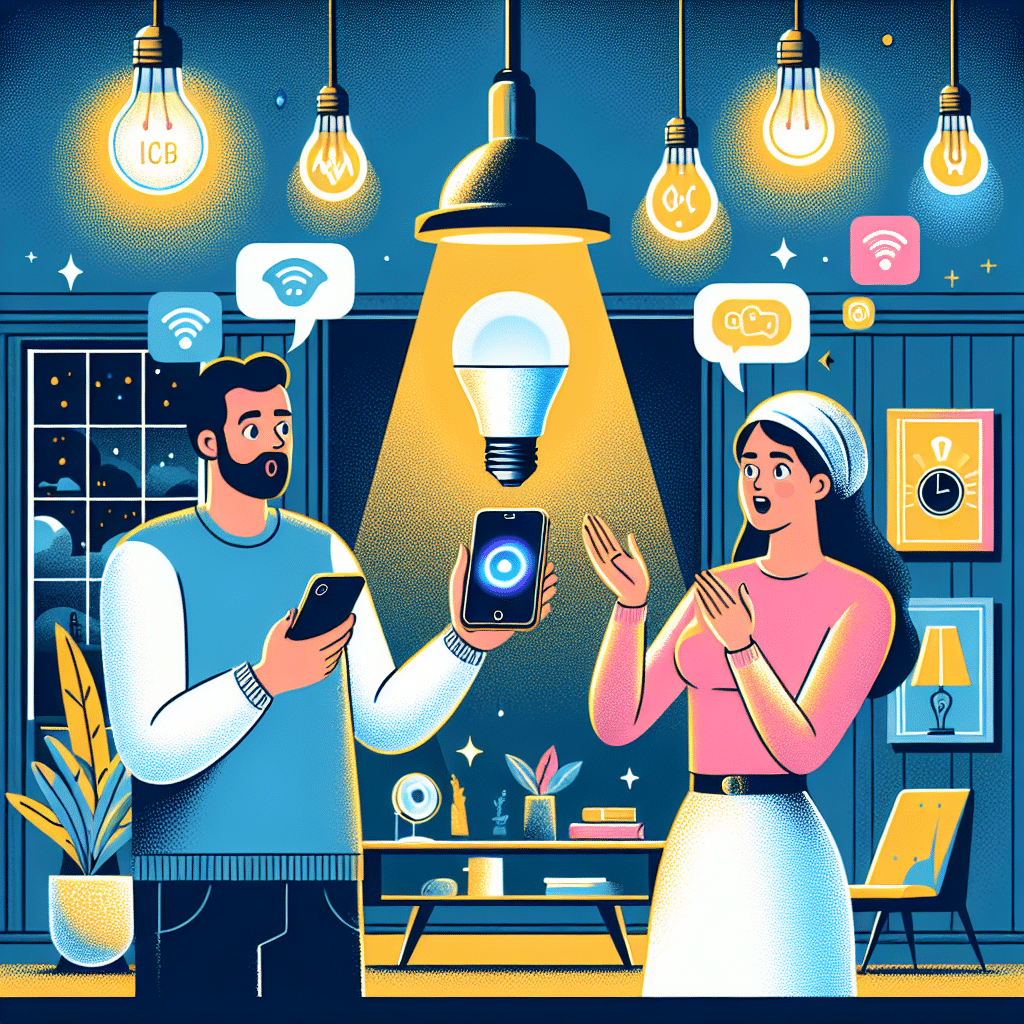Understanding Voice-Controlled Smart Lights
The revolution in home automation has brought us voice-controlled smart lights, a remarkable blend of convenience, efficiency, and energy-saving technology tailored for modern living. This article provides an in-depth look at voice-controlled smart lights, featuring their functionality, benefits, installation, popular brands, and tips on optimizing their use.
What Are Voice-Controlled Smart Lights?
Voice-controlled smart lights are lighting systems that enable users to control the brightness, color, and on/off functions using voice commands. These smart lights typically connect to a home’s Wi-Fi network and are compatible with virtual assistants such as Amazon Alexa, Google Assistant, and Apple’s Siri.
Key Features of Smart Lights
-
Wireless Connectivity: Most smart lights connect via Wi-Fi or Bluetooth, allowing seamless integration with your existing smart home ecosystem.
-
Color Customization: Many smart LED bulbs offer a full spectrum of colors, enabling users to adjust ambiance according to mood or occasion.
-
Scheduling and Automation: Smart lights can be programmed to turn on or off at specific times, aiding in energy conservation and enhancing home security.
-
Dimming Capabilities: The ability to dim lights using voice commands is a popular feature, allowing adjustments based on needs.
-
Energy Efficiency: Smart LED bulbs consume less energy than traditional incandescent bulbs, translating to lower electricity bills.
Benefits of Voice-Controlled Smart Lights
Convenience
Voice-controlled smart lights introduce hands-free operations, which means you can control them while cooking, carrying items, or relaxing. Just a simple voice command can illuminate a room or switch off a light.
Enhanced Energy Savings
By programming your lights to turn off when you leave or when they are not needed, you can significantly reduce energy usage. Many smart lights also include features that report energy consumption.
Increased Home Security
Smart lights can simulate your presence when you’re away through scheduling or randomization, helping deter potential intruders. Pairing smart lights with motion sensors can also enhance security by lighting areas automatically when someone approaches.
Customizable Lighting Ambiances
With various color settings and mood presets, you can create the perfect ambiance for any occasion, be it a cozy movie night or an energetic gathering.
Popular Smart Lights on the Market
Philips Hue
Philips Hue is a leading name in smart lighting, offering an extensive product range, including bulbs, light strips, and outdoor lights. The system is known for its vibrant colors and compatibility with most voice assistants, making it a popular choice for beginners.
LIFX
LIFX lights are known for their high brightness and no need for a hub, connecting directly to Wi-Fi. They provide rich color quality and offer a variety of smart lighting products, including LED strips and bulbs.
Wyze Bulbs
Wyze bulbs are budget-friendly smart lights that provide essential features without compromising quality. Compatible with Alexa and Google Assistant, these bulbs are an excellent choice for smart home newcomers.
Sengled
Sengled offers an array of smart light products that emphasize both affordability and performance. Their bulbs come with built-in motion detection and security features, enhancing their practicality.
Installation Process
-
Choose Your Smart Lights: Start by selecting the type of smart lights that best fit your needs and budget.
-
Download the App: Each brand usually has a dedicated app (e.g., Philips Hue app, LIFX app) that helps set up and control your lights.
-
Screw in Your Bulbs: Replace existing bulbs with smart bulbs. Ensure the power is off during this process for safety.
-
Connect to Wi-Fi: Open the app and follow prompts to connect the smart bulbs to your Wi-Fi network.
-
Enable Voice Control: Link the smart light app to your preferred voice assistant by following the app instructions. Typically, this involves enabling the integration through the assistant’s app.
-
Test Functionality: Use voice commands to test functionality, such as “Turn on the living room lights” or “Set bedroom lights to blue.”
Voice Commands for Smart Lights
Voice commands simplify the operation of smart lights. Here are common commands compatible with major virtual assistants:
For Amazon Alexa
- “Alexa, turn off the kitchen lights.”
- “Alexa, set the living room lights to 50%.”
- “Alexa, change the bedroom lights to red.”
For Google Assistant
- “Hey Google, turn on the office lights.”
- “Hey Google, set the porch lights to blue.”
- “Ok Google, dim the hallway lights to 10%.”
For Apple Siri
- “Hey Siri, turn on the lamp.”
- “Hey Siri, change the light color to green.”
- “Hey Siri, set the lights to relax mode.”
Tips for Optimizing Smart Lights
-
Group Controls: Use the app to group similar lights (like all bulbs in a room) for easier control.
-
Explore Scenes: Many apps allow you to create ‘scenes’ that adjust multiple lights at once to a pre-defined setting.
-
Routine Scheduling: Set routines for daily use, such as turning on the kitchen lights in the morning or dimming living room lights during movie nights.
-
Firmware Updates: Keep your bulbs updated via the app to ensure you have the latest features and improvements.
-
Explore Compatibility: Check compatibility with other smart home devices, such as motion sensors or security cameras, to enhance your setup.
Troubleshooting Common Issues
-
Connectivity Problems: If lights aren’t responding, ensure your Wi-Fi is stable. Restart your router or the smart bulbs as necessary.
-
Voice Recognition Failures: If the voice assistant doesn’t recognize commands, ensure the bulbs are connected properly in their respective apps and the assistant is updated.
-
Performance Lags: Performance can sometimes lag if multiple devices are connected. Consider upgrading your router to handle smart home devices more effectively.
Future of Smart Lighting
As technology continues to advance, voice-controlled smart lights are likely to become even more sophisticated. Developments in AI and machine learning may allow for more personalized lighting experiences based on user habits and preferences.
Voice-controlled smart lights have transformed the way we interact with our home environments, offering accessibility, efficiency, and energy savings. With their growing presence, now is an ideal time for beginners to embrace this smart home technology.
